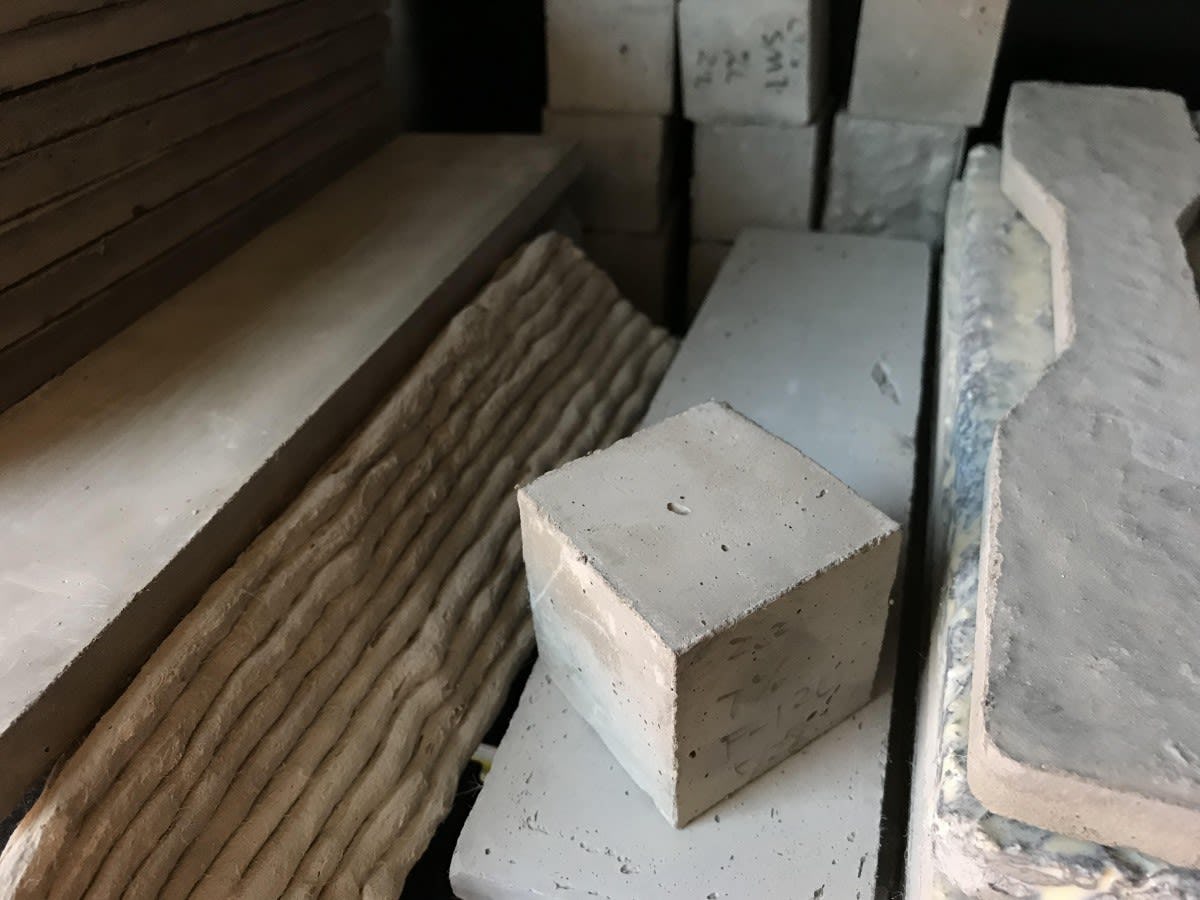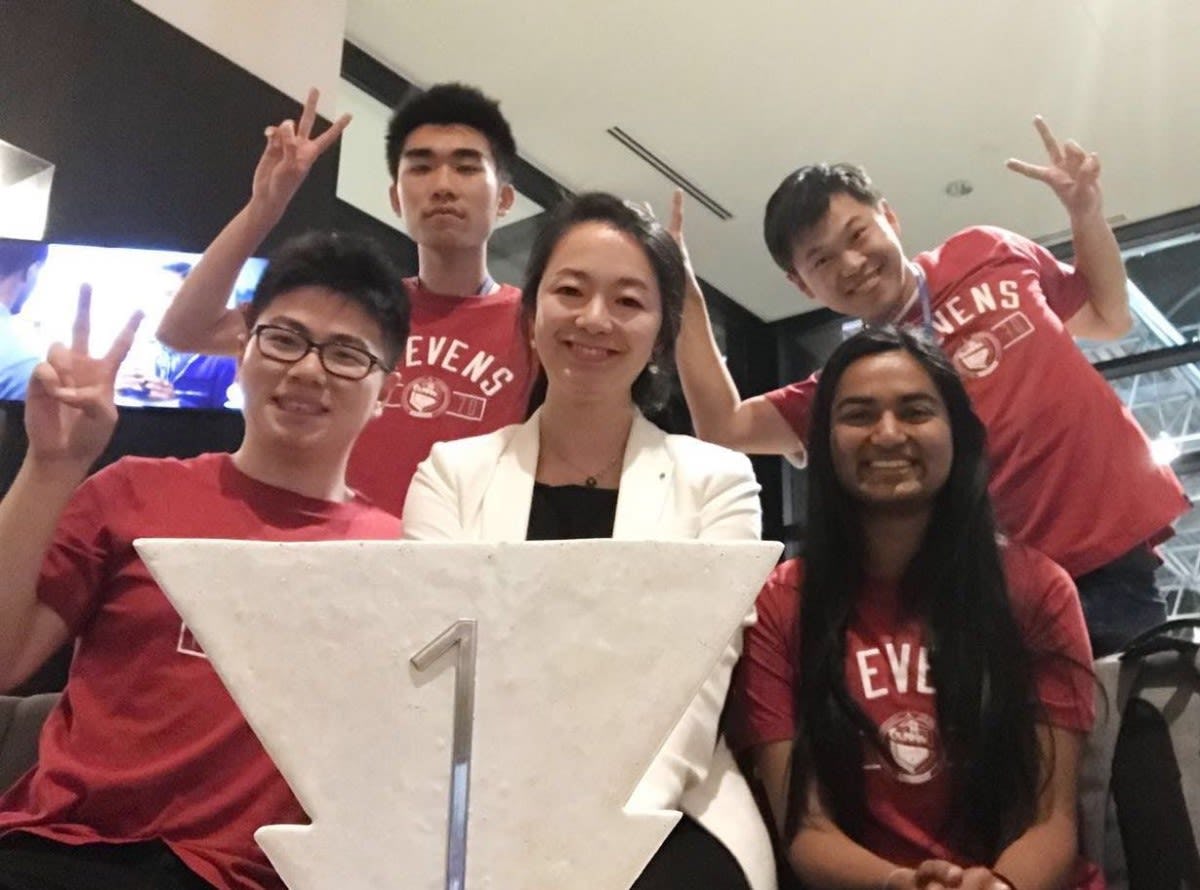Stevens Students Mix Up a Win at International Symposium on Ultra-High Performance Concrete
A team of civil engineering students from Stevens Institute of Technology brought home a 1st place win at an international student competition focusing on ultra-high performance concrete (UHPC) this month. The competition, which was part of the 2nd International Interactive Symposium on UHPC, was held June 2-5 in Albany, New York.
The students – Dong Liu, Jiantao Ren, Nidhi Shah and Yanping Zhu – were led by assistant professor Weina Meng during the two-phase competition, which asks students to design an attractive, efficient beam out of UHPC. During the first phase, nearly 100 teams from around the globe submitted written reports describing their projects. The judges invited the top nine teams to travel to the symposium for the second phase – on-site testing at Rensselaer Polytechnic Institute.
Artisanal Concrete
To describe UHPC, team member Nidhi Shah turns to the metaphor employed by the Symposium’s keynote speaker, Hauke Jungjohann of Burohappold Engineering. “If you think of the difference between grocery store bread and artisan bread, you can also understand the difference between a conventional concrete mix and UHPC,” writes Shah.
The UHPC recipe simply yields a superior product. “Specifically, the incorporation of fibers, fine-grained aggregate and reactive powders to the mix design amplifies the compressive, flexural and tensile strengths and also improves ductility and toughness,” Shah explains.
It’s these characteristics that make UHPC so valuable for sustainable construction. Building with UHPC requires less reinforcing steel and thinner applications of concrete without compromising performance. This reduces resources spent transporting and prepping materials – and minimizes the need for maintenance and replacement over time.
UHPC mixes also rely on fly ash, an industrial byproduct, as a key ingredient – giving new life to a so-called waste material. “UHPC puts the construction industry a step in the direction towards alleviating its contribution to climate change by improving structural performance and structure life while reducing material usage,” writes Shah.
Out-Mixing the Competition
The Stevens team spent an entire semester working on their winning design and other competition materials – a written report, video and poster presentation. To win, the beam and sample cubes needed to perform well under pressure – and the team needed to accurately predict their structure’s load-carrying behaviors during testing.
“Our beam was able to withstand a concentrated load acting at midspan of 13.9 kips, which was right at the median of the 12 kip – 16 kip desired range for the competition,” writes Shah. “There were two other teams with beams which performed within the target range; however, our beam withstood the highest magnitude of concentrated load at midspan within the desired range and we performed close to our design predictions.”
Shah believes her team’s custom UHPC mix set them apart, since many other teams used company-designed mixes. “Our mix was unique in that it was designed in-house by Dr. Weina Meng,” she explains. “So, it was special for the team to have our mix perform as well as it did.”
Looking Forward
Stevens assistant professor Yi Bao also weighed in on the results. “All the team members were really surprised and excited because the competitors were super strong and came from top tier-1 research universities,” he writes.
That element of surprise – and the fact hard work and innovation won the day – makes the team’s victory even sweeter. “I told the students what we should do is do our best,” Meng notes. “I asked [them] to revise the posters more than 20 times. I believed if we tried our best, the results would not be bad.”
The win also reinforces the value of Meng and Bao’s work on advanced construction materials at a time when infrastructure and sustainability are both top of mind. “We hope our research will contribute to improving the safety and durability of civil infrastructure in the US,” adds Bao.




